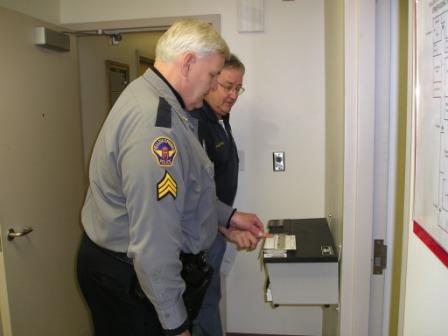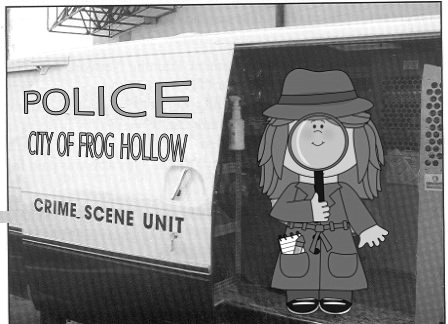Every department has at least one officer who doesn’t quite beat the same drum as the others. His, or her, rhythm is slightly off. They can’t quite fit in no matter how hard they try. Sure, everyone likes this person, and they don’t really do anything that’s too weird, yet they always seem to do, well dumb stuff.
Enter my friend Franklin and his first experience with, well, this …
The honky-tonk nightclub was situated just outside the city limits. They were open for business on Saturday nights only and the place was so popular it didn’t take long for the gravel parking lot to fill to capacity with souped-up cars and dented and dusty pickup trucks with gun racks mounted in the rear windows.
Male patrons slicked their hair with Brylcreem or Butch Wax and they wore their best jeans, Stetson hats, dinner-plate-size belt buckles shaped like the state of Texas or a gun of some sort, and spit-shined cowboy boots made of cow, snake, or gator hide, or a combination of two or more. Sometimes the fancier snake hide adorned boots were reserved for Sunday attire along with a store-bought Sears and Roebuck striped suit and pearly-white socks. Many strapped hunting knives to their belts—their handles carved from deer antlers or hunks of wood cut from trees that once stood on family land.
Women curled and teased their hair until it reached heights only before seen by birds, power company linemen, and airline pilots, and then they loaded it with enough Aqua Net to hold it tightly in place for an entire evening of two-stepping and do-si-doing. They slipped into their finest square-dancing dresses and they waited on their front porches for one of those gussied-up farm trucks to pull into the driveway, and when it did … well, “Yipee ki-yay” the night had begun.
This club, the 95 Dance Hall, allowed brown-bagging (bring your own liquor), otherwise known as BYOB—bring your own bottle—because they didn’t have a license to sell alcohol. but they did supply ice and various mixers/chasers. The ice was freshly cracked from 50 lb blocks purchased that afternoon from the local ice and coal business.
Club workers filled galvanized washtubs with the ice and it was free for the taking, with the price of admission. In addition to counter-wiping and keeping a layer of freshly-scattered sawdust on the floor (the ground wood made for a nice “slicker’d-up dance surface, so I was told), the dancehall staff—the wife of the club owner, their kids, and the wives of the steel guitar sliders and banjo pickers—refilled the large metal containers throughout the evening as the frozen chunks of water melted.
By 10 p.m, the 95 Dance Hall was flat-out jumpin’. The house band, the Virginia Barn Dance Boys, was in high gear—fiddling, steel-guitaring, banjo-pickin’, and yodelin’ to all get out. Fancy dresses twirled. Scuffed boot heels clicked and tapped against the wood flooring. Drinks disappeared. Bottles emptied. Vision blurred and speech slurred. Voices and laughter grew louder and louder. The music became more frantic. The drummer rat-a-tatted at machine gun pace … And then the inevitable happened.
Somebody winked at somebody’s best girl and as quick as a fresh green grass goes through a goose, the place erupted into a free-for-all. Fists. Chairs. More fists. More chairs. Then, a knife. And then some blood. And then a call to the sheriff’s office. “HELP!”
Now’s a good time to introduce you to our department’s “one guy.” Remember the description above … doesn’t quite beat the same drum, etc.?
Okay, this is Franklin (not his real name, of course), a thin black man who was was quiet and somewhat shy, especially around women. He rarely spoke unless spoken to. He wore thick glasses with black rims and his uniform, the brown over tan, was always, without fail, neatly pressed with creases sharp enough to peel an apple and shoes so shiny they reflected moonlight on a cloudy night.
Franklin did not like to get his clothes dirty. In fact, he freaked out if a speck of mud marred the surface of his shoes, and he’d stop whatever he was doing to clean and polish them. He wore a tie even when it wasn’t required. And he did not, absolutely did not, would not, nor ever, exceeded the speed limit. Even when responding to the worst of the worst emergency calls. 55 meant 55 and by God 55 is where the needle stopped. Dead on the double nickels. Not one mile per hour more.
Franklin was my friend. A good friend too. But he was a bit quirky, to say the least.
I’d seen Franklin heading to murders-in-progress with red lights flashing and spinning and flickering, with siren wailing and screaming like a baby with a handful of thumbtacks in their diaper, but the posted speed limit was 45 mph so …
Franklin was an extremely cautious driver in other ways too. He utilized every safe driving tactic taught to him at the academy and he always drove with both hands on the wheel, one positioned at ten and the other at two. His seat was pulled nearly all the way forward and even then he leaned forward so close to the steering wheel that it nearly rubbed his chin at every curve and turn (he couldn’t see very well at night was his explanation for leaning close to the windshield). Blind as a bat is what we all thought.
This particular night there were four of us working the late shift—Franklin, two others, and me—and we were all dispatched to the “fight with weapons call.” Having been to a few of those calls at the nightclub over the years I knew we’d be outnumbered and I knew we’d have to fight, going toe-to-toe with practically every bumpkin in the county who used the opportunity as a free pass to punch a deputy . Therefore, since I’ve never been all that fond of pain, or bleeding, I requested backup from the state police and from a nearby city.
By the time we arrived, the fight had spilled out into the parking lot. So we, three deputies and several backup officers from surrounding jurisdictions, began the task of breaking up the massive brawl, which quickly turned into a “them against us” battle.
We were well into the thick of it when we heard a squalling and yelping siren coming our way. A few seconds later a brown sheriff’s office patrol car rolled slowly into the parking lot with siren and lights still in full “I mean business” mode. It was, of course, Franklin, the fourth member of the night shift.
Seriously, you’ve got to picture this to appreciate it. Fifteen cops and forty or so cowboys going to it in the parking lot. Fists flying, boots kicking, handcuffs clicking, batons swinging, clothing torn and dirty, heads bruised from contact with our lead-filled leather saps and wooden nightsticks, faces bruised and jaws stinging from fists covered with brass knuckles. And Franklin, calmly exiting his police car, then smoothing the wrinkles from his pants before slowly easing toward the massive battle.
Suddenly, it was like he, shiny-shoed Franklin, was sucked into a vacuum. In the blink of an eye, he was pulled into the fracas and was doing his best to restrain, arrest and, well, he was basically doing his best to stop people from hitting him.
We eventually gained control and arrested every fool we could lay our hands on and those troublemakers were hauled away to jail. Those of us who remained on the scene went inside the dance hall to speak with potential witnesses to a couple of pretty nasty stabbings. Franklin was one of the deputies who accompanied me inside.
We were a motley crew to say the least—clothing dirty, shoes scuffed, bloodstains here and there, and cut and bruised and sufficiently battered.
Franklin looked as if he’d been dragged through a hog pen, beaten by club-wielding cave people, and then run through the hand-cranked wringer of his grandmother’s antique washing machine. His glasses sat slightly askew on the bridge of his nose. His upper lip was cut and the lower bruised and swollen.
When we stepped from the darkness into the festive interior of the 95 Dance Hall, the lead guitar player of the Virginia Barn Dance Boys was in the process of calling a square dance. Dancers on the floor dipped and swirled and twirled and ducked and hopped like their lives depended on their actions. They’d paid no attention to what had taken place outside.
The music, if one could call it that, was horrible. The fiddler was busy sawing away at the strings, producing screeches that would cause Poe to lose sleep. The drummer’s timing was off. Way off. First he was a half beat too fast, then his sticks tapped slightly slower than the rest of group’s caterwauling. His right foot pushed the pedal against the bass drum in total out-of-syncness with what his left foot and both hands were trying to do. It was almost if that foot had a mind all it’s own.
The guy on the acoustic guitar apparently had never learned to properly tune his instrument. As a musician myself, the sound tap-danced on the raw ends of my nerves. But the crowd did not care. They were gettin’ it done like dancing was their nine-to-five job. Like the world would end if they didn’t go at it like politicians at an election year fundraiser.
Franklin did not move into the club any further than five feet from the front double wooden doors. He simply stood there blinking his eyes as he looked at the spinning and blinking colored lights. At the dancers. The condensation-covered ice tubs that were now half full of water. Franklin looked like a kid at the circus for the first time.
When we finally wrapped up our investigation and were standing outside in the parking lot beside our respective patrol cars, I asked Franklin if he was okay. His battered lips split into a slightly crooked smile before he said, “I’m fine. It’s just that I’ve never seen so many white people at one time in their own environment. And they were Huck-a-Bucking their asses off. This (he pointed to the club) is just bizarre.”
Franklin shook his head from side to side and turned to walk away, but stopped to look back over his shoulder. He said, “You know I’m going to have nightmares over this, right?” Then he playfully two-stepped back to his car and just before climbing in he raised an arm over his head to give a thumbs-up. He let out a loud, “Yee-Haw!” as he slid into the driver’s seat.
We each stood in silence, and disbelief, that Franklin had displayed some sort of emotion and a bit of humor. It was way out of character for him.
We watched Franklin pull out onto the highway where he sped away, at no more than 45 mph, of course. He tooted his horn twice before rounding the curve that took him out of view.
To this day, whenever I see someone square-dancing on TV I immediately think of Franklin’s descriptive term for those specific gyrations and swirls and twirls.
Huck-A-Bucking, according to Franklin: a traditional dance where participants spin, twirl, stomp, duck, and bow to their partners while semi-following the instructions yelled out to them by a band leader who’s sometimes referred to as a caller. When mixed with alcoholic beverages, huck-a-bucking can quickly switch from fun to fighting. Although, fighting is sometimes considered fun by avid huck-a-buckers.
Yee-Haw, y’all!






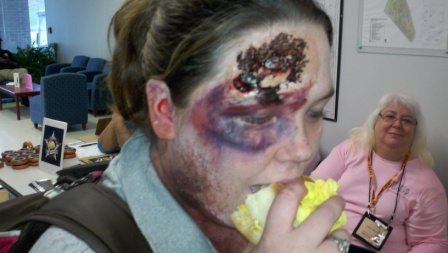



 Pam, on the other hand, is a seasoned veteran who’s “been there, done that” a thousand times. She sincerely believes she’s impervious to stress.
Pam, on the other hand, is a seasoned veteran who’s “been there, done that” a thousand times. She sincerely believes she’s impervious to stress. The two IA detectives separate Pam and Sam and then take their statements. Later, the “suits” compare notes and, unbelievably, the officers’ stories vary … a lot. In fact, it’s almost as if Pam and Sam told tales that took place at two different locations and they’d practically described two entirely different events. Yes, they were that far apart.
The two IA detectives separate Pam and Sam and then take their statements. Later, the “suits” compare notes and, unbelievably, the officers’ stories vary … a lot. In fact, it’s almost as if Pam and Sam told tales that took place at two different locations and they’d practically described two entirely different events. Yes, they were that far apart.


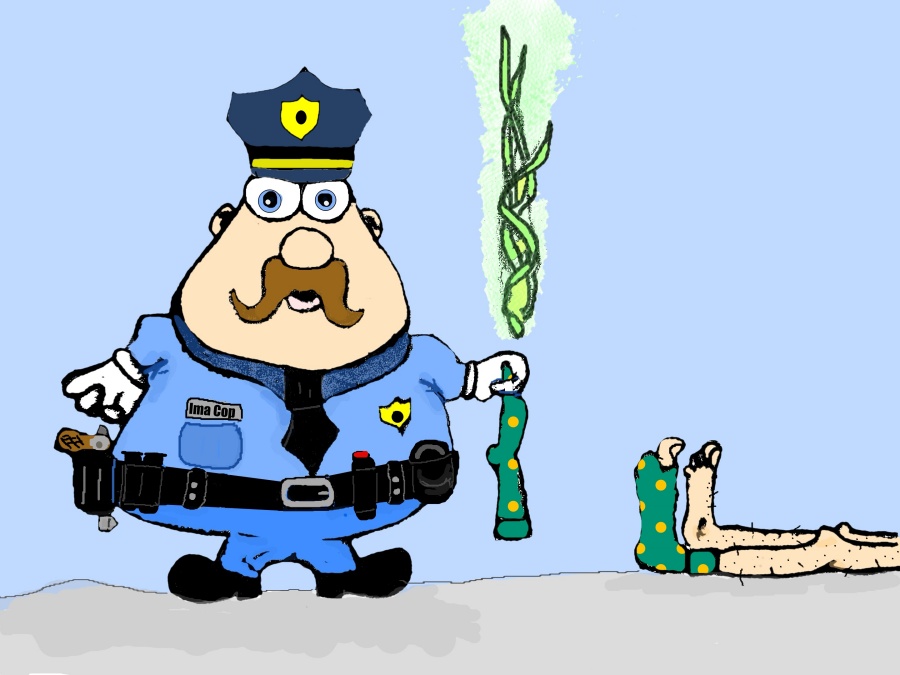


















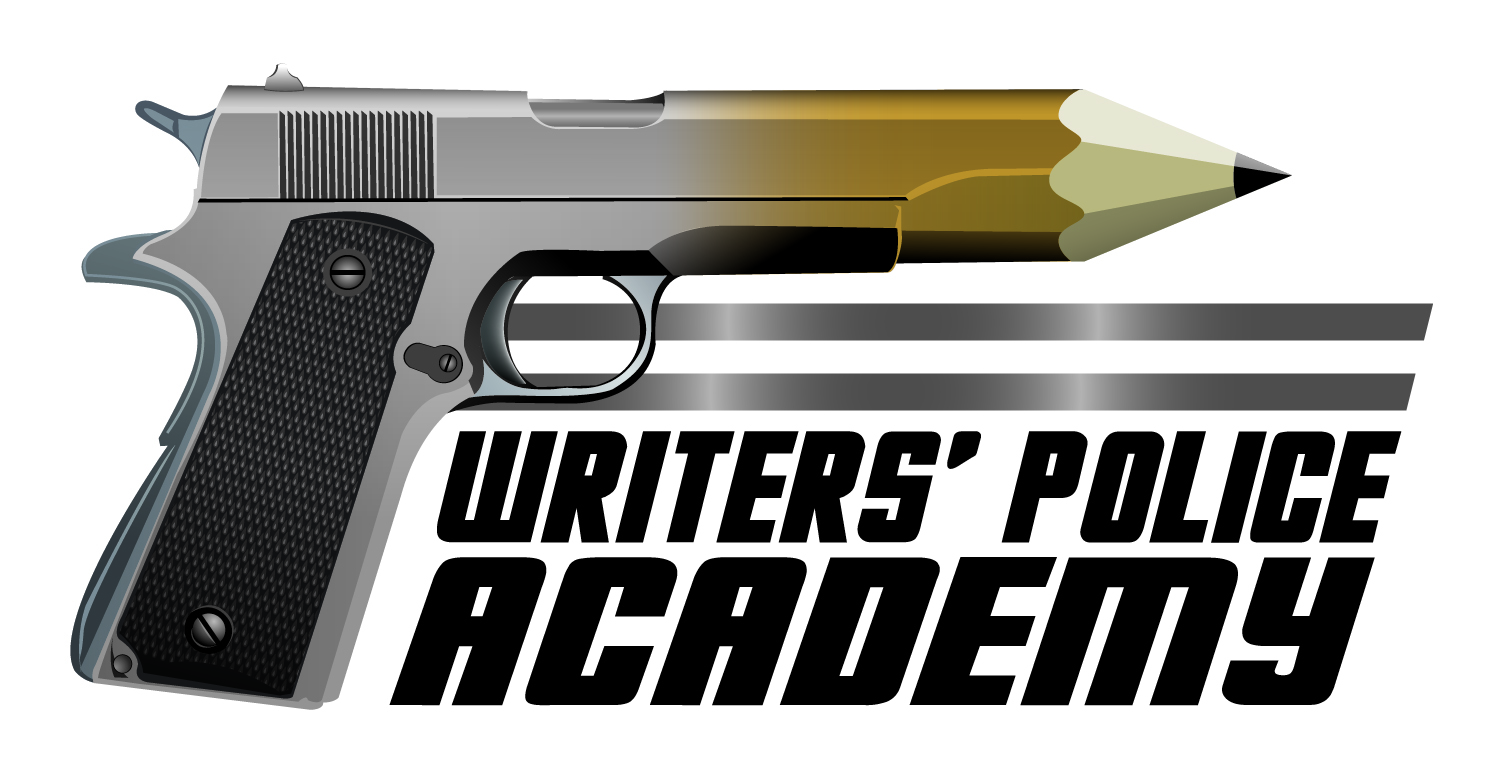 The items display the official registered trademark of the Writers’ Police Academy, the Gun/Pencil logo.
The items display the official registered trademark of the Writers’ Police Academy, the Gun/Pencil logo.









 In your latest book you’ve brought to life who you believe to be the coolest protagonist ever, an FBI agent who rides into a fictional town on a beautiful and powerfully muscular solid white horse to save the day by solving your cleverly-created murder. Her first order of business—take charge of, well, everything. First, she gives the local homicide detectives the boot. Next she tells the chief to stay out of her way because this is a job for the feds and, by the way, she’ll need the chief’s office as her home base … so, “GET OUT!” Then the cocky and totally obnoxious special agent scouts the area for just the right person to fall in love with before the case is solved. Then and only then is it time to get down to the business finding a murderer.
In your latest book you’ve brought to life who you believe to be the coolest protagonist ever, an FBI agent who rides into a fictional town on a beautiful and powerfully muscular solid white horse to save the day by solving your cleverly-created murder. Her first order of business—take charge of, well, everything. First, she gives the local homicide detectives the boot. Next she tells the chief to stay out of her way because this is a job for the feds and, by the way, she’ll need the chief’s office as her home base … so, “GET OUT!” Then the cocky and totally obnoxious special agent scouts the area for just the right person to fall in love with before the case is solved. Then and only then is it time to get down to the business finding a murderer.















